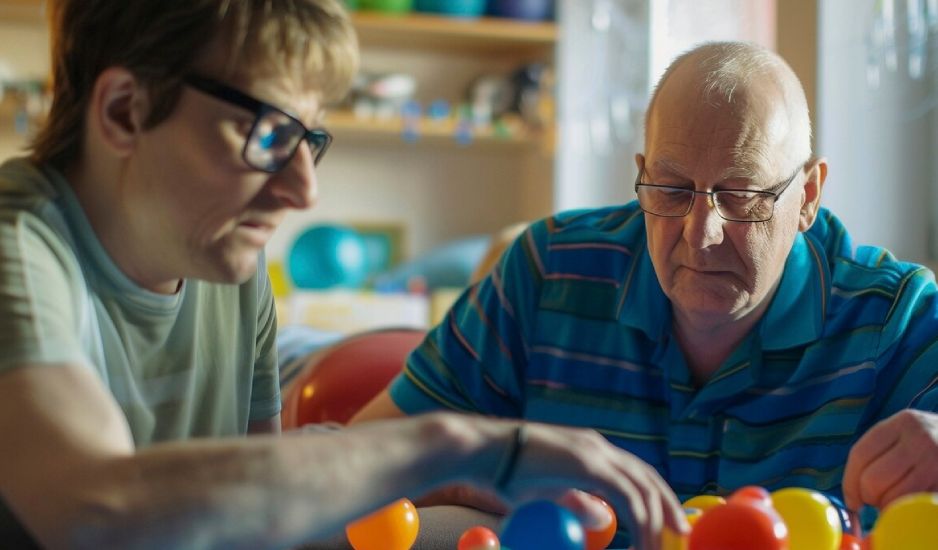Introduction
Autism Spectrum Disorder (ASD) is often thought of as something that’s recognized in early childhood, but for many adults, diagnosis comes much later in life. This can be surprising, both for the individual and those around them, but it’s actually more common than people realize. Adult diagnosis of autism is rising as awareness grows, and more people are seeking explanations for difficulties they’ve experienced throughout their lives. While this recognition can be validating, the process of identifying autism in adulthood presents unique challenges that differ significantly from those faced during childhood diagnosis.
Understanding why many people are diagnosed later in life, what barriers exist, and the impact of receiving this diagnosis as an adult is key to addressing gaps in healthcare and social support for autistic adults.
Barriers to Early Diagnosis
Changing Diagnostic Criteria Over Time
One of the primary reasons many autistic adults remain undiagnosed until later in life is that the criteria used to identify autism have changed considerably over the years. In the past, diagnostic models, like those in the earlier versions of the Diagnostic and Statistical Manual of Mental Disorders (DSM), were narrowly focused on more overt behaviors typically observed in children. The focus was often on social development delays or clear communication issues.
As a result, many individuals whose traits didn’t fit neatly into those criteria were overlooked. It wasn’t until the DSM-5, published in 2013, that a more comprehensive and nuanced understanding of autism began to emerge, capturing a broader range of symptoms and presentations, especially in adults. However, by then, many people had gone through much of their lives without knowing they were autistic, and this has created a backlog of adults now seeking diagnosis in their 30s, 40s, and even later.

Gender Differences in Diagnosis
Another significant factor is how autism presents differently in men and women. Historically, autism has been diagnosed far more frequently in boys than in girls. This led to a diagnostic bias that often left women undiagnosed or misdiagnosed. Research is now showing that autistic women tend to exhibit behaviors that are less obvious and are more likely to mask or camouflage their symptoms, often as a way to fit in socially.
Women, especially, develop strategies to mimic neurotypical behaviors, such as making eye contact or engaging in small talk, even if these actions feel unnatural. This camouflaging makes it harder for healthcare professionals to recognize autism, leading to underdiagnosis. For many autistic women, it’s not until adulthood, when they start experiencing burnout or mental health struggles, that they begin to seek out explanations for why life has felt unusually challenging.
Lack of Awareness and Resources in Past Generations
For those diagnosed later in life, growing up in an era where autism awareness was minimal also played a role. Decades ago, the public and medical communities had limited knowledge of autism, especially when it came to the more subtle traits of high-functioning individuals. This means that for many adults today, particularly those over 40, autism simply wasn’t on the radar of doctors, teachers, or even parents.
In the past, behaviors that would now be recognized as indicators of autism—like difficulty with social interaction or sensitivity to sensory input—were often attributed to personality quirks, shyness, or even laziness. Without the resources or understanding we have today, many individuals were left to navigate the world without the support they needed.
Symptoms in Adults that Differ from Childhood Diagnosis
Masking and Camouflaging Behaviors
For many autistic adults, masking is a significant part of their daily lives. Masking refers to the conscious or unconscious effort to hide autistic traits to blend in with the neurotypical world. Adults may force themselves to maintain eye contact, suppress repetitive behaviors, or engage in social small talk, all of which can feel exhausting or unnatural.
This constant effort to fit in can lead to burnout, where individuals feel emotionally and mentally drained after prolonged social interaction. It can also contribute to anxiety and depression, as the effort to conform often results in the suppression of their authentic selves. As a result, many adults only discover they are autistic after seeking help for mental health issues that have been building for years.
Subtle or Misinterpreted Symptoms
Many symptoms of autism in adults are more subtle than in children and can easily be misinterpreted or overlooked. For example, challenges with executive functioning—such as difficulty organizing tasks, managing time, or planning—may be seen as irresponsibility rather than a symptom of autism. Similarly, sensory sensitivities, like being overwhelmed by loud noises or bright lights, may be brushed off as overreacting or being “too sensitive.”
These misinterpretations often lead to feelings of frustration, as autistic adults may struggle to understand why they find everyday tasks or environments more overwhelming than their peers. For many, this confusion continues until they receive a diagnosis, which helps explain their lifelong experiences.
Comorbidities and Misdiagnosis
Another reason autism is often missed in adults is due to the presence of comorbid conditions. Many autistic adults are diagnosed with mental health conditions like anxiety, depression, or obsessive-compulsive disorder (OCD) before anyone considers the possibility of autism. These conditions can overlap with autistic traits, making it harder for clinicians to distinguish between them.
For example, social anxiety might be seen as the root cause of an individual’s difficulties in social settings, while autism is left undiagnosed. Similarly, behaviors related to OCD might overshadow repetitive behaviors associated with autism. Misdiagnosis or partial diagnosis means that many autistic adults only receive a full picture of their neurodivergence after years of interacting with the healthcare system.

The Impact of a Late Diagnosis
Personal and Psychological Impact
For many adults, receiving an autism diagnosis later in life brings a mix of emotions. On one hand, there’s often a sense of relief—a newfound understanding of why certain things have always felt difficult or different. For those who have struggled with social interactions, sensory sensitivities, or managing everyday tasks, the diagnosis can validate their experiences and provide clarity.
However, the diagnosis can also lead to feelings of grief or confusion. Some adults may reflect on their past and wonder how their life might have been different if they’d known earlier. There’s also an adjustment period, as they incorporate this new aspect of their identity into their understanding of themselves. This process can be emotionally intense, but for many, it ultimately leads to greater self-acceptance and empowerment.
Impact on Relationships
A late diagnosis can also have a profound impact on relationships. For families, friends, or partners, the diagnosis can offer explanations for past misunderstandings or communication difficulties. However, it can also raise questions. Family members may struggle to understand how they missed the signs or feel unsure about how to support their newly diagnosed loved one moving forward.
In romantic relationships, a diagnosis can lead to shifts in how partners relate to each other. For some, it might be a relief to have an explanation for certain behaviors or challenges. But for others, the diagnosis may require renegotiating communication and support systems within the relationship. Regardless, the diagnosis often opens up opportunities for better understanding and more effective strategies for navigating social and emotional interactions.
Mental Health Considerations
Adults who receive a late autism diagnosis often face higher rates of mental health issues, including anxiety, depression, and even suicidal thoughts. Many have spent years struggling with the challenges of being autistic without knowing it, leading to feelings of isolation or frustration. Without a diagnosis, they may have been blamed for behaviors that were outside their control, contributing to low self-esteem or self-doubt.
Once diagnosed, these mental health issues don’t simply disappear, but the diagnosis can be a key turning point in understanding the underlying causes. Access to appropriate therapy, support groups, and resources can help individuals manage their mental health more effectively, and many find that connecting with the autistic community provides a much-needed sense of belonging.

Barriers in the Diagnostic Process for Adults
Limited Access to Specialists
One of the most significant barriers to receiving an autism diagnosis in adulthood is the lack of professionals who are specifically trained to recognize autism in adults. Most clinicians are more accustomed to diagnosing autism in children, and many diagnostic tools are designed with kids in mind. For adults, this often means navigating a healthcare system where few specialists understand how autism presents later in life.
Finding a professional who specializes in adult autism diagnosis can be particularly challenging. Many adults must go through long waiting lists to see specialists, and even when they do, the cost of a thorough diagnostic assessment can be prohibitive. Autism evaluations typically involve extensive interviews, questionnaires, and sometimes even psychological testing, which often isn’t fully covered by insurance. As a result, many adults either delay seeking a diagnosis or never pursue one at all, even if they suspect they might be on the spectrum.
Stigma and Misconceptions
Another barrier comes from widespread stigma and misconceptions surrounding autism, especially in adulthood. Many people, including some healthcare providers, still view autism as a childhood condition. The prevailing stereotype of autism is often one of a young boy who struggles with clear social and communication challenges, not an adult who has adapted to navigate the world in their own way. This stereotype can prevent professionals from even considering autism as a possibility when adults come in with concerns.
Additionally, adults seeking a diagnosis often face internalized stigma. After years of being told they’re “different” or “too sensitive,” they may worry about what a diagnosis means for their identity. Will people see them differently? Will they be taken seriously, or will others brush off their struggles as less valid because they “seem fine” on the surface? These concerns can create hesitancy, causing adults to avoid seeking out a diagnosis that could actually lead to greater self-understanding and access to support.
Diagnostic Tools and Their Limitations
Current diagnostic tools for autism, while improving, are still largely based on childhood behaviors and milestones. Many screening questionnaires or checklists ask about developmental delays or behaviors that are most relevant to children, like early speech difficulties or trouble with play. For an adult looking for answers, these tools often don’t capture the reality of their experiences.
Moreover, because adult autism symptoms can be subtler or more internalized, traditional diagnostic tools might miss key aspects of an adult’s struggles. For instance, many adults with autism have learned to “mask” their symptoms, which can make them seem less affected by the condition than they actually are. This can lead to incomplete or inaccurate assessments. There’s a growing recognition in the field that new diagnostic frameworks are needed—ones that are more attuned to the adult presentation of autism and consider the lifelong development of coping mechanisms.
Improving the Diagnosis Process for Adults
Training Healthcare Providers
A crucial step in addressing the challenges of adult autism diagnosis is improving the education and training of healthcare providers. Most general practitioners and therapists receive little, if any, formal training on how to identify autism in adults. By expanding training programs to include adult autism recognition, healthcare professionals can better understand the wide variety of ways autism manifests throughout the lifespan.
This training should also focus on the different ways that autism presents in men and women, as well as in people from diverse racial and cultural backgrounds. The current diagnostic model is still heavily influenced by research conducted primarily on white males, and this narrow focus contributes to disparities in diagnosis across different populations. An interdisciplinary approach—where psychiatrists, psychologists, neurologists, and other specialists work together—could provide a more holistic view of each individual seeking an autism diagnosis.

Public Education and Awareness Campaigns
Beyond healthcare, there’s a need for broader public education about autism in adults. Many of the misconceptions that exist stem from outdated or incomplete understandings of what autism looks like. Public awareness campaigns that highlight the experiences of autistic adults, especially those diagnosed later in life, can play a huge role in shifting societal perceptions.
By sharing more diverse stories of autism—particularly those that don’t fit the typical “young, non-verbal male” stereotype—these campaigns can reduce the stigma surrounding autism in adulthood. They can also encourage more adults who suspect they might be autistic to seek a diagnosis without fear of judgment. Education doesn’t just benefit those seeking a diagnosis; it also helps families, employers, and communities better understand and support autistic individuals in all areas of life.
Policy and Advocacy
Finally, there is a growing need for advocacy around policy changes that support autistic adults, particularly in healthcare. Currently, many insurance providers still do not cover the cost of autism diagnostic assessments for adults, viewing it as unnecessary or non-essential. Advocacy groups are pushing for these assessments to be recognized as a critical part of healthcare, given their importance for mental health and overall well-being.
In addition to healthcare coverage, advocacy is needed to promote funding for research into adult autism. Much of the existing research still focuses on children, but there is a growing recognition that we need more studies on how autism affects people throughout their lives. By promoting policies that support late-diagnosed individuals, from healthcare access to workplace accommodations, society can begin to address the gaps that leave many autistic adults struggling without the help they need.
Personal Stories and Case Studies
Individual Accounts of Late Diagnosis
One of the most powerful ways to understand the challenges and impacts of late autism diagnosis is by listening to personal stories. Many adults diagnosed with autism in their 30s, 40s, or beyond describe the experience as both eye-opening and deeply emotional. For some, it brings a sense of closure—finally having an answer for the struggles they’ve faced for years.
Take, for example, someone who spent their entire life feeling socially out of sync, experiencing frequent misunderstandings in conversations or discomfort in crowded, noisy spaces. For them, a diagnosis offers validation. It’s not just that they were awkward or overly sensitive—they were autistic, and knowing that allows them to begin embracing who they truly are. These stories also highlight the gaps in healthcare, as many describe how their symptoms were dismissed or misunderstood by doctors for years before finally receiving a diagnosis.
Famous Examples of Late-Diagnosed Autistic Individuals
There are also well-known figures who have been diagnosed with autism as adults, and their stories offer insight into how diagnosis can transform one’s self-understanding. For instance, several actors, authors, and scientists have shared their experiences of being diagnosed in adulthood, often using their platforms to raise awareness about autism in ways that challenge conventional ideas. Their willingness to speak openly about their diagnoses helps to normalize adult autism and encourage others to seek answers.
While every person’s journey is unique, these famous examples serve as a reminder that autism doesn’t have a singular look. It affects individuals across all walks of life, and a late diagnosis doesn’t diminish the validity of one’s experience. If anything, it emphasizes how much work remains to be done in ensuring that everyone who is autistic has the opportunity to be recognized and supported.
Going through the Challenges
The challenges surrounding adult autism diagnosis are numerous, but they’re not insurmountable. From outdated diagnostic criteria to gender biases and the cost of assessments, there are many barriers that prevent adults from being diagnosed earlier in life. However, as awareness grows and more professionals receive training in recognizing autism in adults, we are moving toward a future where more people can access the diagnosis and support they need.
For those who receive a diagnosis later in life, the journey can be emotional but ultimately empowering. It’s a chance to reframe past experiences and move forward with a better understanding of oneself. With continued research, advocacy, and education, society can create a more inclusive environment for autistic adults, ensuring they have the resources and support they need to thrive.

